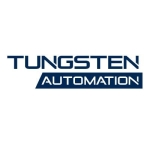We do not have any specific use cases for UiPath. We automate areas where we have a large volume of work.
UiPath makes it easy to build automation because it uses a drag-and-drop interface and requires little coding.
We use UiPath to automate our repetitive processes. This reduces manual effort, freeing up employees to focus on other tasks, such as learning new skills and improving their careers. Doing repetitive tasks on a daily basis does not help employees develop their skills or advance their careers.
An associate in the loan approval process must validate licenses, forms, and certain records of the floor person before approving the loan for the next level. This person goes through a lot of paperwork on a daily basis, which can be very tiring. However, we now have UiPath, which uses artificial intelligence and machine learning to extract all the information from the licenses. This reduces the associate's workload by 50 percent, allowing them to complete the rest of the job more easily.
UiPath's automation has resulted in zero errors.
UiPath enables us to implement end-to-end automation. The solution includes all of the components necessary for end-to-end automation, from process identification to deployment. End-to-end automation is very important because it can help businesses save time and money. To identify a process that can be automated, we can either speak with the business team or use UiPath's process mining capacity. Process mining is a technique that can automatically analyze business processes and identify areas that can be automated. Once we have identified a process that can be automated, we can use UiPath to create a robot to automate the process.
UiPath's user community is very large with millions of users. Everyone has questions, and if we have a question, we don't have to post and wait for an answer. There is always someone who already answered the question. For example, if I have a question about selectors, there will be answers to my question. The user community is like a database of answers.
UiPath helped our organization by eliminating repetitive job tasks.
UiPath helped us minimize our on-premises footprint, which is important. For example, let's say an employee used to have to come into the office to check papers or documents to determine if a loan could be processed for a particular individual. Now, that employee can do that work remotely. There is no need for them to go to the dealer and collect all the papers, which can then be submitted or uploaded into a software program. The employee can now do all of this work from their computer.
All team members are required to participate in the UiPath Academy courses suggested by UiPath and to complete the certification. Access to UiPath Academy is great because our employees do not have to go to a particular coaching center to get a certification. They can do it on their own, on their mobile devices, at home, or on their laptops. They can learn at their own pace and in their own time. UiPath Academy has excellent examples and assessments for each chapter, which makes it easier to complete the course.
The AI functionality affects our ability to automate more complex processes. For example, in the UK, there are five different types of licenses that individuals may need to obtain in order to be approved for a loan. This means that there are numerous licenses that need to be processed for each loan application. In order to determine whether a license is expired or legitimate, we need to manually review each one. This can be a time-consuming and error-prone process. However, using AI and machine learning, we can automate this process. AI can be used to identify the different types of licenses that are required for a loan application. Machine learning can then be used to train a model to determine whether a license is expired or legitimate. This allows us to automate the entire process, which can save us time and money.
In our data center, we are unable to develop certain processes because existing rule-based automation is not sufficient. End-to-end automation helps our data center implementation.
UiPath helps reduce the cost of our digital transformation and it does not require upgrades or IT application support.
The solution helped reduce human error by 100 percent. We now have zero errors.
UiPath freed up our employee's time to work on other processes that can not be automated.
By eliminating the need for human intervention in repetitive processes, UiPath saved us costs.
The most valuable features are CR capabilities and logistics automation.
UiPath can improve its AS center region by expanding its reach and addressing technical difficulties in certain areas. While the platform works well on-premises, there are some technical issues that can be resolved when moving to the cloud.
I have been using UiPath for five years.
I give UiPath's stability a nine out of ten.
I give UiPath's scalability an eight out of ten.
The initial setup is straightforward. However, it requires some technical knowledge, as we will need to connect to the SQL Server and Elasticsearch to create the tables. There is documentation available online that we can use, and we may also need to contact UiPath for assistance.
One person is enough for the deployment.
The implementation was completed in-house.
We have seen a return on investment with UiPath through the elimination of quality errors.
UiPath is a bit more expensive than other similar solutions, and its price is increasing daily.
We evaluated multiple tools to verify our requirements, cost, licensing, and support capabilities.
I give UiPath a nine out of ten. I recommend UiPath to others.
UiPath does not require maintenance.


















